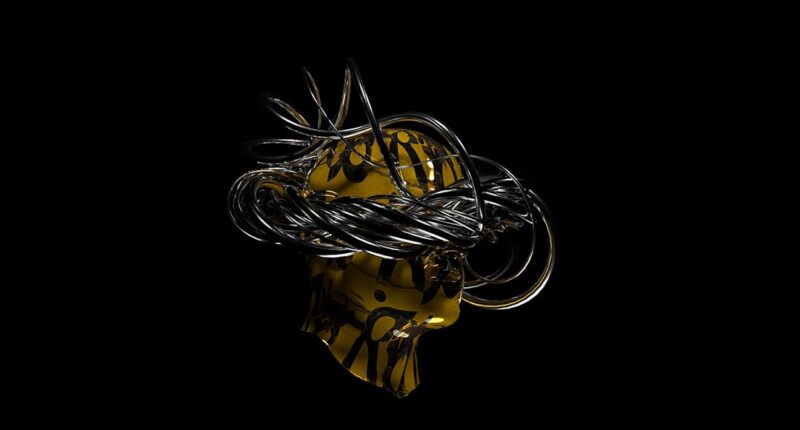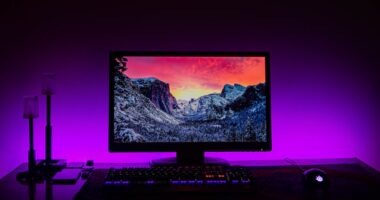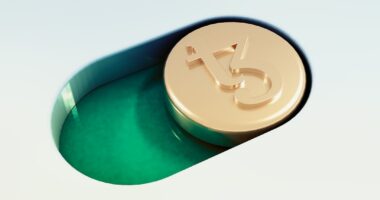Recent years have seen a notable increase in the use of NFTs, or Non-Fungible Tokens. The way we view and trade digital goods—from artwork and collectibles to virtual real estate & in-game items—has been completely transformed by these distinctive digital assets. The significance of user experience (UX) design in NFT projects is becoming more and more apparent as the NFT market expands. Creating memorable and pleasurable user experiences is the main goal of user experience design. When it comes to NFTs, UX design is essential to making sure users can interact with the digital assets in a smooth way, grasp the purpose and legitimacy of NFTs, and navigate platforms with ease.
Key Takeaways
- UX designers play a crucial role in NFT projects, ensuring that users have a seamless and enjoyable experience.
- Understanding the NFT ecosystem is essential for UX designers to create effective designs that meet user needs.
- User research and analysis techniques, such as surveys and interviews, can help UX designers gain insights into user behavior and preferences.
- Creating NFT user personas can help UX designers better understand their target audience and design accordingly.
- NFT user journey mapping can help UX designers identify pain points and opportunities for improvement in the user experience.
NFT projects can be more successful in the long run if the user experience is well-designed & increases adoption rates and user satisfaction. In NFT projects, UX designers play a diverse role with a range of duties. In order to provide a seamless and interesting user experience, they are in charge of researching user needs and expectations, working with other team members, designing user-friendly interfaces, and conducting user research. Cooperation is essential in NFT projects because UX designers must ensure that the design is in line with the project’s goals and objectives by closely collaborating with developers, artists, marketers, and other stakeholders.
Through efficient teamwork, UX designers can capitalize on the knowledge of other members of the team and develop a comprehensive user experience that takes into account every facet of the NFT ecosystem. UX designers need to be extremely knowledgeable about the NFT ecosystem and its constituent parts in order to create user experiences that are both efficient and productive for NFT projects. Smart contracts, blockchain networks, digital wallets, and NFT marketplaces are some of the components that make up the NFT ecosystem. Interface design professionals can create intuitive and user-friendly designs by comprehending the interactions between these components. To reduce friction for users, they could, for instance, make sure that purchasing, selling, & trading NFTs is a simple and open process.
In NFT projects, user research & analysis play a crucial role in UX design. UX designers can develop experiences that appeal to the target audience by having a thorough understanding of user behavior and preferences. UX designers have a variety of methods at their disposal for obtaining user insights. They consist of analytics, usability testing, interviews, and surveys.
| Metrics | Description |
|---|---|
| User Engagement | The level of interaction and interest users have with the NFT platform. |
| Conversion Rate | The percentage of users who complete a desired action, such as purchasing an NFT. |
| User Retention | The percentage of users who continue to use the NFT platform over time. |
| User Satisfaction | The level of satisfaction users have with the NFT platform and their overall experience. |
| Usability | The ease of use and navigation of the NFT platform. |
| Accessibility | The ability of users with disabilities to access and use the NFT platform. |
| Visual Design | The aesthetic appeal and visual elements of the NFT platform. |
| Information Architecture | The organization and structure of information on the NFT platform. |
Interviews and surveys can yield insightful qualitative information that helps designers comprehend the goals, problems, & expectations of their users. On the other hand, usability testing offers important insights into usability problems & areas for improvement by watching users as they interact with prototypes or current platforms. Quantitative information about user behavior, such as click-through, bounce, and conversion rates, can be obtained through analytics.
UX designers can obtain a thorough grasp of user requirements and preferences by merging qualitative and quantitative data, which helps them make more informed design choices. Using data from user research & analysis, NFT user personas are made-up depictions of the target market. By using these personas, UX designers can better understand their users and create experiences that are tailored to their individual requirements & preferences.
Developing strong NFT user personas requires determining essential traits like goals, motivations, demographics, & pain points. To obtain information & build precise personas, UX designers can employ methods like surveys, market research, and interviews. The user experience can then be kept user-centered by using these personas as a point of reference throughout the design process. The process of NFT user journey mapping entails putting the user’s interactions & experiences with NFT platforms on display. This method aids in the identification of problems, areas in need of development, & opportunities to improve the user experience for UX designers.
UX designers must take into account the different touchpoints & interactions that users have with NFT platforms in order to develop effective NFT user journey maps. This covers finding NFTs in the first place, buying and selling, managing digital wallets, and interacting with NFT communities. UX designers can find places where users might run into problems or become frustrated by outlining these journeys and then creating solutions to solve these problems. The goal of NFT user interface (UI) design is to provide aesthetically pleasing & easily navigable interfaces that make it easier for users to engage with NFT platforms. Because it directly affects the platform’s usability and overall experience, effective user interface design is essential to drawing in and keeping users.
Information architecture, branding, visual hierarchy, & navigation patterns are just a few of the elements that UX designers must take into account when creating NFT user interfaces. In addition to being aesthetically pleasing and simple to use, they must make sure the interface offers clear and succinct information about NFTs. A lot of users access NFT platforms through mobile devices, so they also need to take into account how responsive the interface is on various screens. Crucial phases in the UX design process for NFT projects are user experience testing and optimization. UX designers can find usability problems, get feedback, and make data-driven improvements by testing the user experience with actual users.
NFT user experiences can be tested and improved using a variety of strategies by UX designers. They consist of heatmaps, user feedback questionnaires, A/B testing, and usability testing. Through the observation of users interacting with prototypes or current platforms, usability testing enables designers to pinpoint areas where users may become confused or frustrated. In A/B testing, two or more design iterations are compared to see which one has higher user engagement & conversion rates. By emphasizing areas of interest and possible usability problems, heatmaps offer visual representations of user interactions. User satisfaction and areas for development can be learned a lot from user feedback surveys.
UX designers can make sure that NFT platforms adapt and grow over time to meet users’ changing needs & expectations by testing and improving the user experience on a regular basis. Numerous job opportunities for UX designers have been created in the industry by the growing popularity of NFTs. Experienced UX designers that can produce smooth, captivating user experiences that set their platforms apart from rivals are needed for NFT projects. User researchers, information architects, interaction designers, and UX/UI designers are just a few of the roles that UX designers in the NFT industry may hold. Among others, they may work for blockchain startups, digital art platforms, NFT marketplaces, & gaming companies.
It is imperative for UX designers to remain current with industry trends and developments in order to thrive in the NFT sector. They must comprehend how user needs and preferences are changing, as well as how technical developments affect the NFT ecosystem. UX designers can establish themselves as important resources in the field by learning new things and changing with time. In conclusion, user experience design is essential to NFT project success.
UX designers can boost user satisfaction, accelerate adoption rates, & support the expansion of the NFT market by producing clear & compelling user experiences. NFT user experience design is poised for great things in the future. UX designers will have to adjust to new technology, changing user habits, and shifting market trends as the NFT ecosystem develops. They will have to make use of cutting-edge technologies like augmented and virtual reality to produce immersive and engaging experiences. The ethical ramifications of NFTs, such as the effects on artists and creators and the environment, must also be taken into account. Through accepting these chances and challenges, UX designers can influence NFT user experience design going forward and support the industry’s ongoing expansion & innovation.
If you’re interested in exploring the world of NFT user experience design, you’ll definitely want to check out NFT Jobs. This platform is a hub for all things related to NFTs and offers a wide range of job opportunities in the field. From UI/UX designers to blockchain developers, NFT Jobs connects talented professionals with companies looking to enhance their user experiences in the NFT space. To get started, you can visit their website at https://nft-jobs.com/. Additionally, if you’re new to the world of NFTs and want to learn more about this exciting industry, their article titled “Hello World!” provides a great introduction. You can read it here: https://nft-jobs.com/hello-world/.
FAQs
What is NFT?
NFT stands for Non-Fungible Token. It is a unique digital asset that is stored on a blockchain and cannot be replicated or exchanged for something else.
What is a User Experience Designer?
A User Experience Designer is responsible for designing the overall experience of a product or service for its users. They focus on creating intuitive and user-friendly interfaces that meet the needs of the users.
What is an NFT User Experience Designer?
An NFT User Experience Designer is a designer who specializes in creating user experiences for NFTs. They focus on designing interfaces that allow users to easily buy, sell, and trade NFTs.
What are the responsibilities of an NFT User Experience Designer?
The responsibilities of an NFT User Experience Designer include designing user interfaces, conducting user research, creating wireframes and prototypes, collaborating with developers and stakeholders, and testing and iterating on designs.
What skills are required to become an NFT User Experience Designer?
To become an NFT User Experience Designer, one needs to have skills in user research, user interface design, prototyping, wireframing, and testing. They should also have knowledge of blockchain technology and NFTs.
What is the job outlook for NFT User Experience Designers?
The job outlook for NFT User Experience Designers is positive, as the demand for NFTs continues to grow. Companies are looking for designers who can create intuitive and user-friendly interfaces for their NFT marketplaces.
What is the salary range for NFT User Experience Designers?
The salary range for NFT User Experience Designers varies depending on their experience and location. According to Glassdoor, the average salary for a User Experience Designer is $85,277 per year in the United States.





